Daytronic 10APID Bedienungsanleitung
Daytronic
Nicht kategorisiert
10APID
Lies die bedienungsanleitung für Daytronic 10APID (2 Seiten) kostenlos online; sie gehört zur Kategorie Nicht kategorisiert. Dieses Handbuch wurde von 2 Personen als hilfreich bewertet und erhielt im Schnitt 4.0 Sterne aus 1.5 Bewertungen. Hast du eine Frage zu Daytronic 10APID oder möchtest du andere Nutzer dieses Produkts befragen? Stelle eine Frage
Seite 1/2

For use in System 10 ....... The Model 10APID is a flexible means of achieving stable, high-speed closed-loop control in engine
dynamometry, fluid pumping, hydraulic servo operations, and any number of other industrial applications. It is compatible with all
System 10 mainframe models.
Operating on standard SET-POINT (“COMMAND”) and FEEDBACK (“RESPONSE”) inputs that may be analog, digital, or
mixed, the 10APID generates a fast, selectively damped ERROR SIGNAL. The COMMAND input is user-adjustable, while the
RESPONSE input represents the measured process variable to be “controlled”— temperature, pressure, position, etc. The ±7
V-DC ERROR SIGNAL output can be used to drive a motor, pump, solenoid valve, relay, temperature regulator, or other servo
equipment, in order to continuously control the measured variable, thereby keeping the process at a steady state, even under
widely varying conditions.
The fastest loop response characteristics are obtained when COMMAND and RESPONSE inputs to the 10APID are both
“real-time” analog signals. This permits continuous error-sensing feedback independent of the mainframe’s internal scan
speed—resulting in a speed that is simply not possible with most sample-based multiplexing systems. In this case, the 10APID
may receive its COMMAND and RESPONSE signals either via hardwire connection to the mainframe’s analog motherboard
(when the signal source is internal to the mainframe system) or via the card’s rear 20-pin I/O connector (when the source is
external).
The COMMAND and RESPONSE inputs may also be established digitally, as standard system data channels. This permits
them to be directly loaded by the operator or supervisory computer, or to represent continuous arithmetic functions of other
system channels that report either constant or variable data. In this case, the COMMAND and RESPONSE inputs may be
easily set and/or modified through the ANALOG OUTPUT (ANO) or CALCULATE (CLC) command. Although the overall
control-loop response time is now limited by the scan rate of the system Central Processor, this will not be a problem in most
applications, since the scan rate is typically over 2500 channels per second.
Regardless of their respective sources, the COMMAND and RESPONSE inputs are continuously available as standard ±5
V-DC analog outputs both from wirewrap pins on the mainframe motherboard and from the 10APID’s rear I/O connector. They
may thus be read by other signal-processing and/or display elements either internal or external to the mainframe system.
Derived from the arithmetic difference between the COMMAND and RESPONSE inputs, the ±7-V ERROR SIGNAL is
continuously available as an analog output from the rear I/O connector only, for connection to the process actuator. You
can easily and precisely adjust the 10APID’s PROPORTIONAL, INTEGRAL, and DERIVATIVE coefficients to tailor the
characteristics of the ERROR SIGNAL output to your specific control application. In general, you will want to make the error
signal react as fast to a change in the COMMAND and/or RESPONSE input as the actuator to which it is issued allows or
requires.
This procedure (“tuning the loop”) is again accomplished by means of the ANALOG OUTPUT (ANO) command. The millivolt
value to which the 10APID’s INTEGRAL (“I”) input is set determines the “rise time” of the error signal, thereby controlling the
basic response time of the loop. A nonzero PROPORTIONAL (“P”) gain term may then be applied to stabilize the error signal
(if it has a large “I” rate). Finally, a nonzero DERIVATIVE (“D”) input may be applied to “soften” the error signal, so that the user’s
servo equipment does not receive a step impulse, and also to slow down the RESPONSE as it approaches the COMMAND
value, thus reducing or eliminating overshoot or undershoot.
SINGLE CHANNEL “PID” LOOP CONTROL
CARD
MODEL 10APID
SINGLE CHANNEL “PID” LOOP CONTROL CARD
[“A’ CARD SERIES]

PUB. No. 10APIDPB.21 | DAYTRONIC CORPORATION | DAYTON, OH | 800.668.4745 | DAYTRONIC.COM
Optimum weighting of the P, I, and D factors will depend on the nature of the process to be controlled. If, for example, the
process is naturally slow to respond to control action, an overdamped error signal with a relatively long “settling time” might be
satisfactory. If a minimum settling time is required, but overshoot or undershoot about the set-point value is also acceptable, an
underdamped error signal might work best. Or finally, if the application requires a minimum settling time with no overshoot, you
might have to adjust the I and D settings to produce a critically damped error signal.
The 10APID’s COMMAND, RESPONSE, INTEGRAL (I), and DERIVATIVE (D) inputs may each be clamped to individual high
and low limit values, in order to protect the user’s servomechanism— and to safeguard the process itself—in the event that the
input in question violates its normal operating range. Clamp limits are preset by the operator, using on-board potentiometer
controls, and may be displayed by the system as standard data channels.
In addition to these limit settings, a System 10 mainframe with LCD or CRT video capability can display “live” values of the
10APID’s COMMAND, RESPONSE, PROPORTIONAL (P), INTEGRAL (I), and DERIVATIVE (D) inputs, as well as the
ERROR SIGNAL output. The COMMAND and RESPONSE signals are simultaneously displayed both as vertical bargraphs
and as “historical” trend charts (versus time). The trend-chart display permits waveform comparison of these variables at a
single glance.
Additional 10APID Specifications:
Inputs and Outputs: See Fig. 36; the card must be set by means of internal programming jumpers for the appropriate sources ofthe
COMMAND and RESPONSE inputs (analog from rear I/O connector, analog from slotconnector, or digital via 10APID “subchannel”)
Subchannel Assignments: See the table onthe previous page; note that except for Subchannel Nos. 1, 7, and 8, all subchannels
are“shared” between an analog input function (i.e., a particular “CLAMP” LIMIT) and ananalog output function (COMMAND, RESPONSE,
INTEGRAL, PROPORTIONAL, or DERIVATIVE—as defined by a corresponding ANO command) COMMAND and RESPONSE Input
Range: ±5 V-DC (internal source); ±7 V-DC (external source) COMMAND and RESPONSE Input
Impedance: Greater than 10 K Ohm
ERROR SIGNAL Output: ±7 V-DC, ±5 mA
Accuracy of ERROR SIGNAL: 0.2% of COMMAND
input
MODEL 10APID
SINGLE CHANNEL “PID” LOOP CONTROL CARD
[“A’ CARD SERIES]
Produktspezifikationen
| Marke: | Daytronic |
| Kategorie: | Nicht kategorisiert |
| Modell: | 10APID |
Brauchst du Hilfe?
Wenn Sie Hilfe mit Daytronic 10APID benötigen, stellen Sie unten eine Frage und andere Benutzer werden Ihnen antworten
Bedienungsanleitung Nicht kategorisiert Daytronic
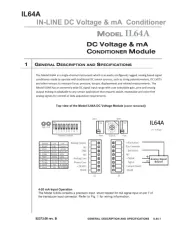
7 September 2025

7 September 2025
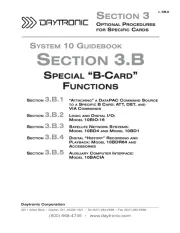
7 September 2025
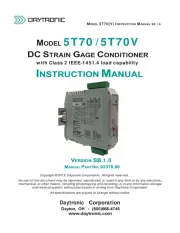
7 September 2025
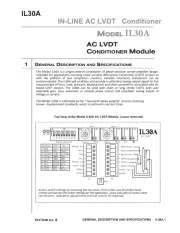
7 September 2025
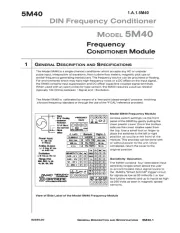
7 September 2025

7 September 2025

7 September 2025

7 September 2025

7 September 2025
Bedienungsanleitung Nicht kategorisiert
- Grendel
- Mac Audio
- EarthQuaker Devices
- Orange
- Toraiz
- MediaMatrix
- Ventus
- Nureva
- Fujitsu
- Black And Decker
- STEALTH Gaming
- Voodoo Lab
- IStarUSA
- Brecknell
- Masterbuilt
Neueste Bedienungsanleitung für -Kategorien-

7 September 2025
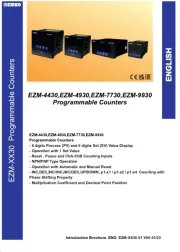
7 September 2025

7 September 2025

7 September 2025
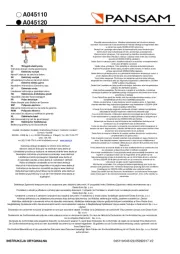
7 September 2025

7 September 2025
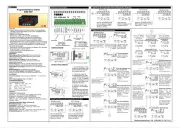
7 September 2025

7 September 2025
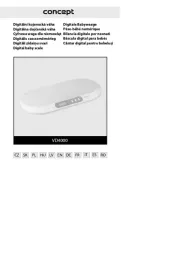
7 September 2025

7 September 2025